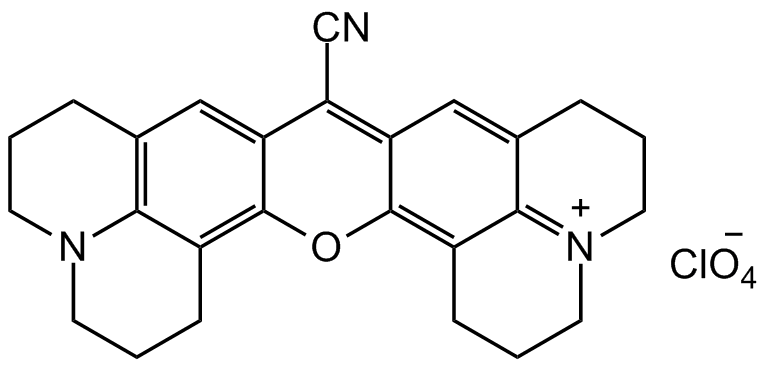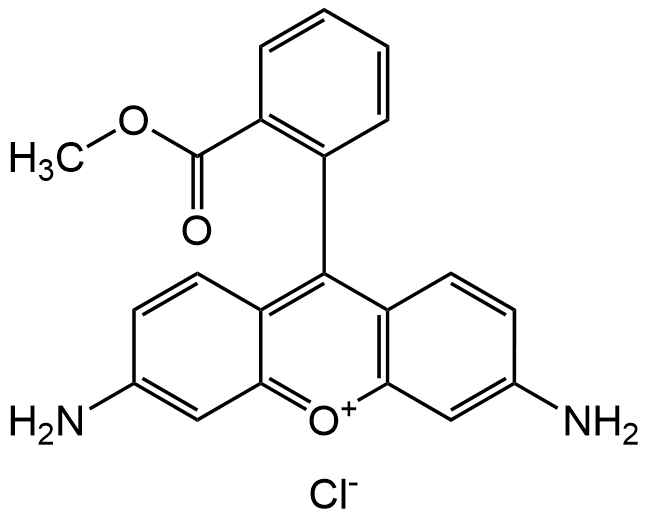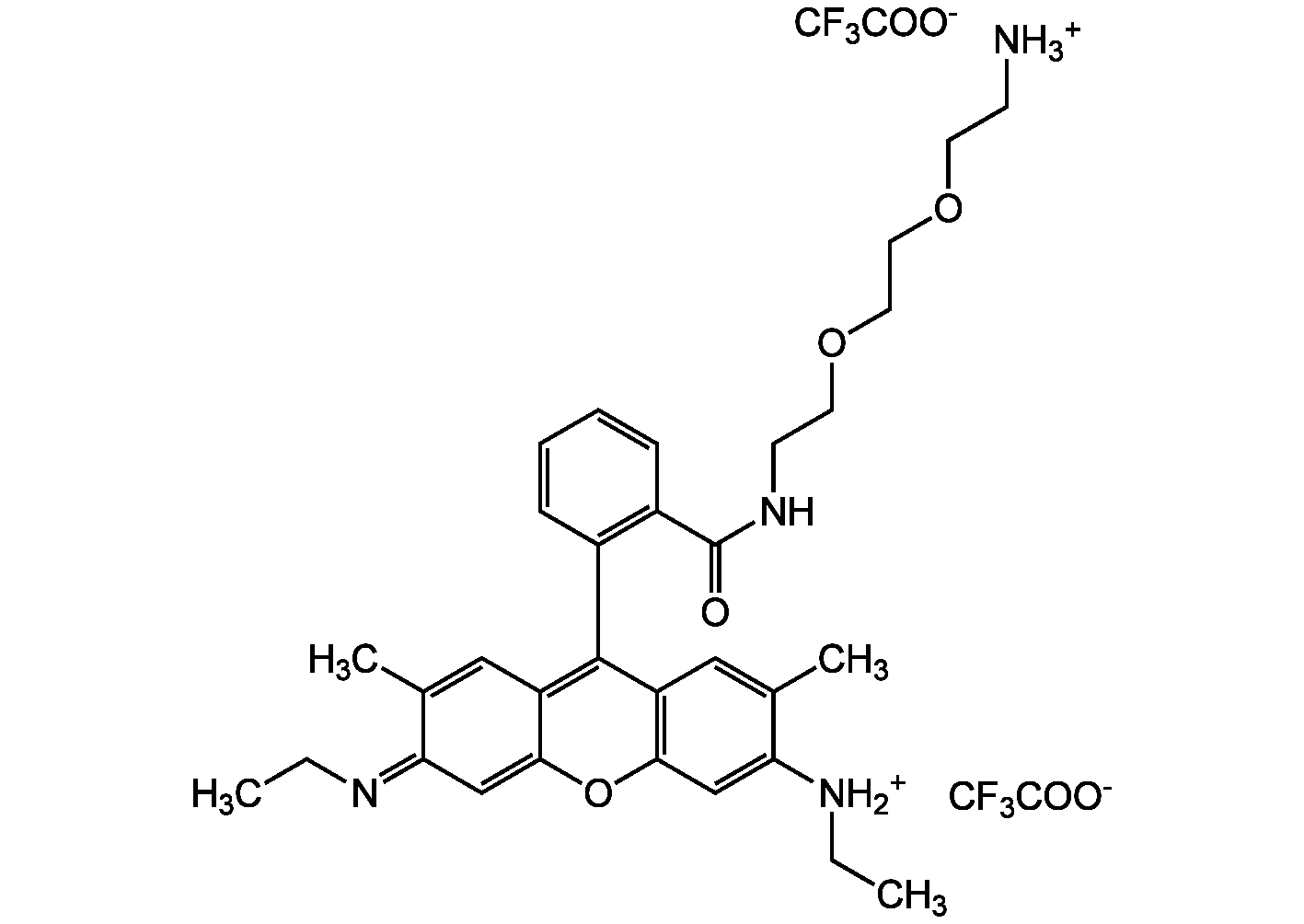
Chemical Structure
Rhodamine 800
CDX-R0137
CAS Number137993-41-0
Product group Chemicals
Estimated Purity>95%
Overview
- SupplierChemodex
- Product NameRhodamine 800
- Delivery Days Customer10
- CAS Number137993-41-0
- CertificationResearch Use Only
- Estimated Purity>95%
- Scientific DescriptionChemical. CAS: 137993-41-0. Formula: C26H26ClN3O5. MW: 495.95. Rhodamine 800 is a near-infrared fluorescent dye, which was originally developed as a laser dye. Rhodamine 800 belongs to the rhodamine family and is one of the few rhodamines that have near infrared fluorescence. It displays bright red-orange fluorescence, making it an ideal choice for labeling proteins, nucleic acids, and other molecules in biochemical studies. Rhodamine 800 finds widespread use in research and analytical applications. It is used for detecting proteins in cells, tracking molecule movement and studying molecular interactions. In fluorescence microscopy and imaging, Rhodamine 800 enables visualization of organelles and molecules within living cells. It proves valuable in flow cytometry for measuring DNA levels and quantifying proteins and other molecules. It has been studied in biosensing applications, and it has been explored as a probe for detecting hydrogen sulfide, metal ions, reactive oxygen species, intracellular pH, DNA, and lipid rafts. Rhodamine 800 is used for staining mitochondria. Rhodamine dyes are membrane-permeable cationic fluorescent probes that specifically recognize mitochondrial membrane potentials, thereby attaching to mitochondria and producing bright fluorescence, and at certain concentrations, rhodamine dyes have low toxicity to cells, so they are commonly used to detect mitochondria in animal cells, plant cells and microorganisms. Rhodamine 800 is widely used as an optical probe, as well as in lasers and solar cells. It can effectively bind to nanostructures and surface plasmon polariton. Spectral Data: lambdaex 682 nm; lambdaem 712 nm in methanol / lambdaex 676 nm, lambdaem 704 nm in DMSO. - Rhodamine 800 is a near-infrared fluorescent dye, which was originally developed as a laser dye. Rhodamine 800 belongs to the rhodamine family and is one of the few rhodamines that have near infrared fluorescence. It displays bright red-orange fluorescence, making it an ideal choice for labeling proteins, nucleic acids, and other molecules in biochemical studies. Rhodamine 800 finds widespread use in research and analytical applications. It is used for detecting proteins in cells, tracking molecule movement and studying molecular interactions. In fluorescence microscopy and imaging, Rhodamine 800 enables visualization of organelles and molecules within living cells. It proves valuable in flow cytometry for measuring DNA levels and quantifying proteins and other molecules. It has been studied in biosensing applications, and it has been explored as a probe for detecting hydrogen sulfide, metal ions, reactive oxygen species, intracellular pH, DNA, and lipid rafts. Rhodamine 800 is used for staining mitochondria. Rhodamine dyes are membrane-permeable cationic fluorescent probes that specifically recognize mitochondrial membrane potentials, thereby attaching to mitochondria and producing bright fluorescence, and at certain concentrations, rhodamine dyes have low toxicity to cells, so they are commonly used to detect mitochondria in animal cells, plant cells and microorganisms. Rhodamine 800 is widely used as an optical probe, as well as in lasers and solar cells. It can effectively bind to nanostructures and surface plasmon polariton. Spectral Data: lambdaex 682 nm; lambdaem 712 nm in methanol / lambdaex 676 nm, lambdaem 704 nm in DMSO.
- Storage Instruction-20°C,2°C to 8°C
- UNSPSC41116134





![Rhodamine 800 [137993-41-0]](https://www.targetmol.com/group3/M00/35/80/CgoaEGayIZiEZIVnAAAAAK01DLw670.png)